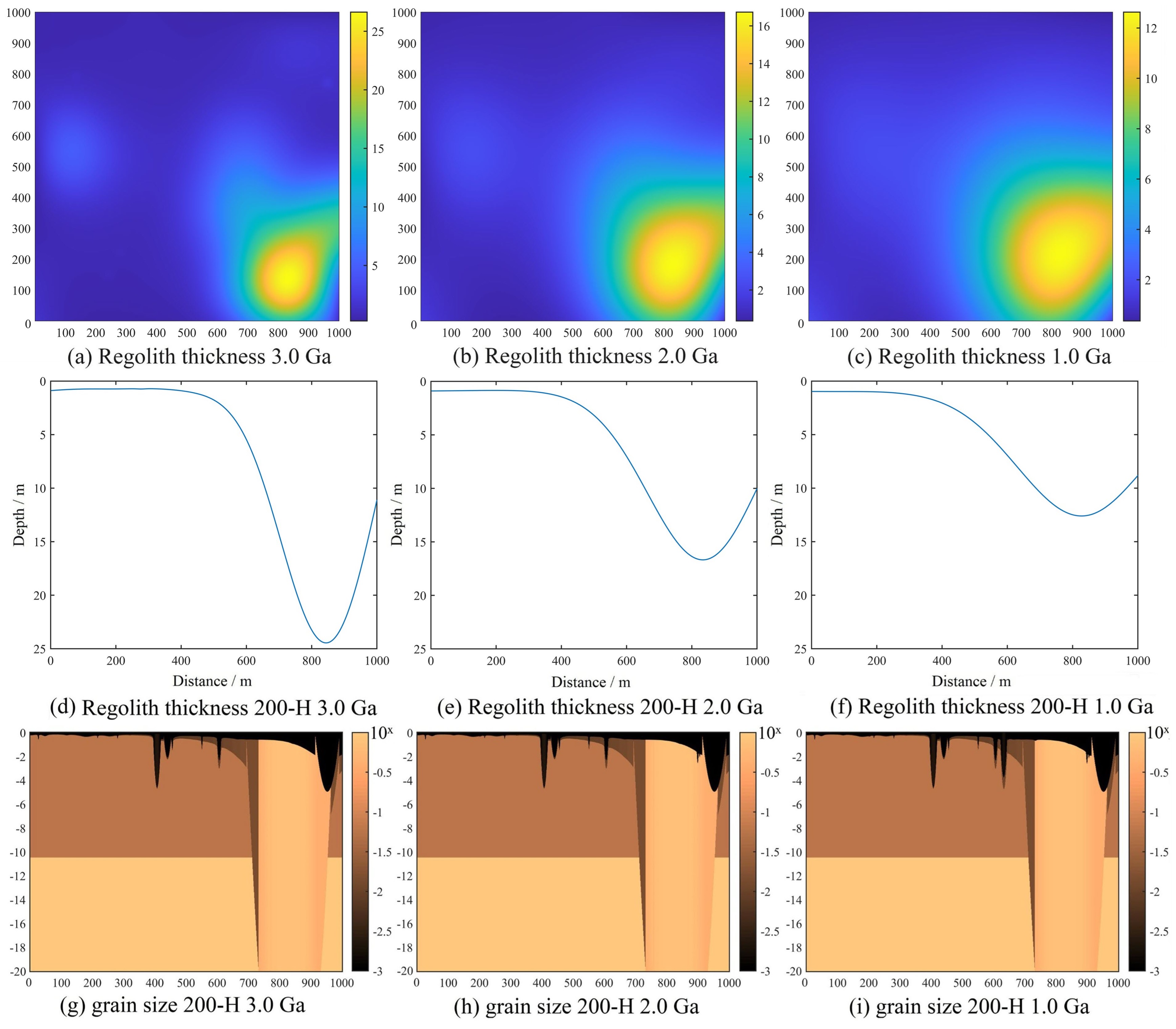Study Reveals Lunar Regolith Evolution Process on Chang'e-4 Landing Area
A research team led by Prof. DI Kaichang from the Aerospace Information Research Institute (AIR) of the Chinese Academy of Sciences (CAS) and collaborators have established an evolution model with simple craters in the Chang’e-4 landing area. The research results reveal the evolution process of lunar regolith and quantifies the overturning and mixing effect of small simple impact events on lunar regolith.
China's Chang'e-4 probe, launched on Dec. 8, 2018, made the first-ever soft landing on the Von Karman Crater in the South Pole-Aitken Basin on the far side of the moon on Jan. 3, 2019.
Lunar regolith, a layer of unconsolidated debris covered on the surface of the Moon, is generally supposed as the main product of impacts from meteorites or micro meteorites, and high-energy particle bombardment. Lunar regolith evolves under the effect of impact gardening and the process is significant to the research of lunar stratigraphy, lunar impact history and the energy distribution of lunar surface.
The research team interpreted the impact craters from high-resolution remote sensing images, and obtained a group of random impact events in the landing area according to the Neukum production function and chronology function of lunar crater.
Based on the established impact events, the team analyzed the evolution process of lunar surface materials under the effect of impact gardening. The impact excavation of a single impact event was firstly analyzed and then the superposition of multiple impact events was calculated.
Subsequently the time factor, the impact events were generated one by one according to the production function of the lunar impact crater, and the calculation was carried out step by step.
Eventually, the spatial distribution of the lunar regolith thickness and the fragmental size in the Chang'e-4 landing area at different ages were obtained. The results are shown in the figure below.

Evolution of lunar regolith in the Chang’e-4 landing area. (a), (b) and (c) are the spatial distribution of lunar regolith thickness at 3.0 Ga, 2.0 Ga and 1.0 Ga, respectively; (d), (e) and (f) are the profiles of lunar regolith thickness at the corresponding time of horizontal 200 m; (g), (h) and (i) are the profiles of lunar regolith size at the corresponding time of horizontal 200 m. The units are all in meters. (Credit: AIR)
The study indicates that the formation of lunar regolith is controlled by larger impact events, while the surficial overturning and mixing of lunar regolith are mainly caused by smaller impact events.
In addition, the study also reveals that the lunar regolith is mostly formed in the earlier times due to the high impact flux at that time. For example, the absolute model age of the Chang'e-4 landing area is about 3.5 Ga, while the lunar regolith had mostly been formed before 3.0 Ga and changed slowly afterwards.
Based on in situ data from Chang'e-4 probe, scientists can determine the thickness of the regolith and revealed the fine subsurface structures and evolutionary history of the probe's landing area. With the model scientists speculated a possible scenario of the regional lunar regolith formation and evolution process, which will provide reference information for future missions of lunar surface exploration and sampling.
The study was published in Icarus.



News & Events